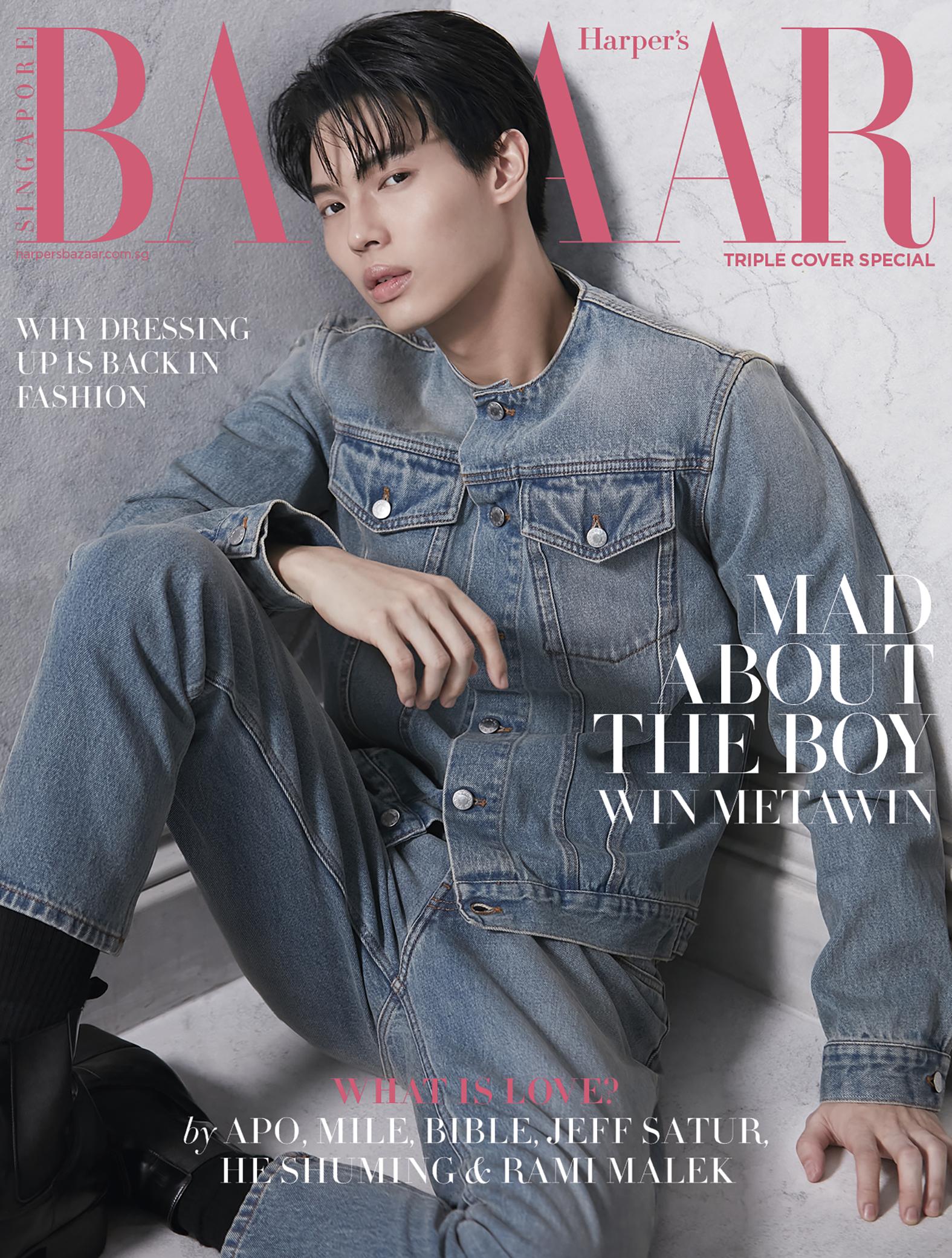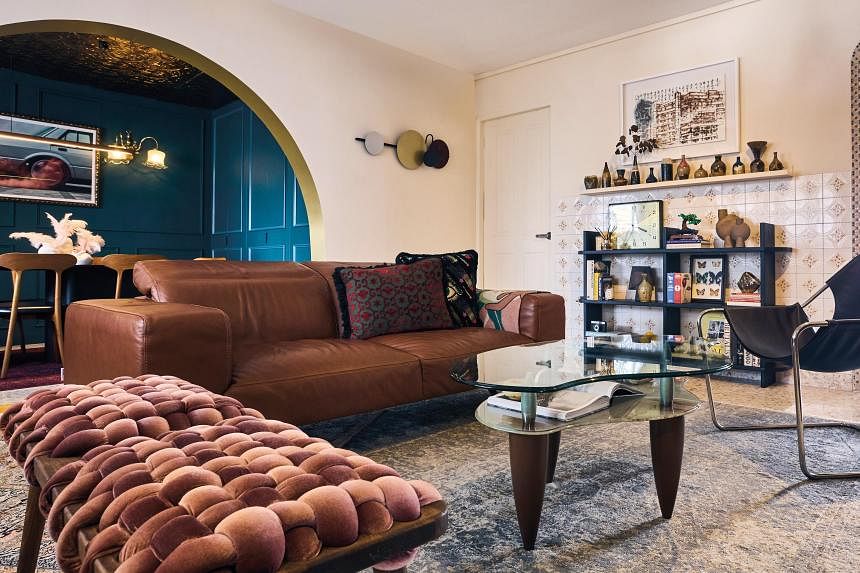In an age where the complete gutting of apartments seems to be the norm among new home owners, it is rare to find a home that pays homage to the distinctive design features of the original property in a way that is charming yet tasteful.
For Mr Hong Yu Ran, a brand manager for a European fashion brand, part of the allure of his Bain Street apartment was that the previous owner – the first and only occupant of the Housing Board flat – had preserved it so well.
For instance, the flooring with the original terrazzo tiles – a common sight in Singapore homes 40 or 50 years ago – was retained. Mr Hong, 35, also kept part of the original tiling that covered one wall in the living room, but chose to cover half of it in cement so that the floral pattern would not be too overpowering.
It is this fine balance of experimentation and restraint that characterises his approach to designing the home.
Mr Hong, who shares the apartment with his partner, first laid eyes on the blocks sitting atop Bras Basah Complex when the couple were hanging out at The Great Escape rooftop bar at Shaw Towers.
When they realised that those were residential blocks – they spotted clothes hanging outside the windows – they began searching property listings the next day.
Luck was on their side. They found a top floor unit which was not only airy and awash with natural light, but also in immaculate condition, with much of its original finishings intact.
“We tried to retain as much as possible the tiles on the floor and the wall throughout the house, as well as the mosaic archway that leads to the kitchen. We didn’t want to completely change everything as we want the 40-year-old flat to feel like it still has a lot of life to give,” says Mr Hong.
In fact, this was part of the brief that was given to Authors, the interior design firm that he hired.
“They really understood the assignment, which was to not force any ideas or experimentation on us as we wanted to preserve as much of the original design as possible. They understood that we wanted to protect the heritage of the flat,” Mr Hong says.
His professional training – he started his career as a visual merchandiser in New York – meant that no detail was accidental.
“Designing my house was a joy as I could bring together what I studied in school as well as my love for fashion. Creating a space at home starts with a feeling – how do you want to feel when you step into a space – and then that feeling gets translated through the colour palette, the placement of furniture and the embellishments and decorations. When you walk through the spaces in our home, it evokes different emotions that inform you what the space is meant for,” he says.
For inspiration, he looked to his travels to France, Mexico and Cuba, which are reflected in the colours and textures throughout the apartment. His background in fashion also influenced the use of different textiles and fabrics throughout the home.
“I gravitate towards textiles that have lots of character and textural detail. Mixing different prints and patterns adds personality and colour to a space. During my undergraduate days, I was part of an anthropological research team that studied traditional Laotian textiles and iconography. That experience made me appreciate textiles as a form of art and a tool for communication,” says Mr Hong.

The living room is a fine example of the multicultural influences that he has skilfully woven together. The seating has been chosen for both form and functionality: A mauve-coloured velvet bench with a knotted design from Israeli brand Knots Studio serves two purposes – as communal seating as well as a convenient spot to put on one’s shoes.
The focal point of the living room is the comfortable brown leather couch from Prestige Affairs which is accented with Gucci cushions and an Ong Shunmugam tapestry piece. A Paulistano cantilever leather lounge chair with its sleek, modern form balances the boho vibe.
Into this mix, Mr Hong added soft touches with Turkish and Indian carpets inherited from his parents, and a handmade tapestry by Belgium-based artist Mira Sohlen on the wall. Its brown, camel and beige tones echo the colours of a pair of ceramic vases nearby.
Mr Hong’s partner is a pottery hobbyist who creates the ceramic pieces – such as a series of vases and vessels – that are displayed on a shelf in the kitchen which retains the original layout with separate wet and dry bathrooms. Long terracotta-hued counters run lengthwise on opposite walls, housing a coffee bar on one side and the stove and oven on the other.
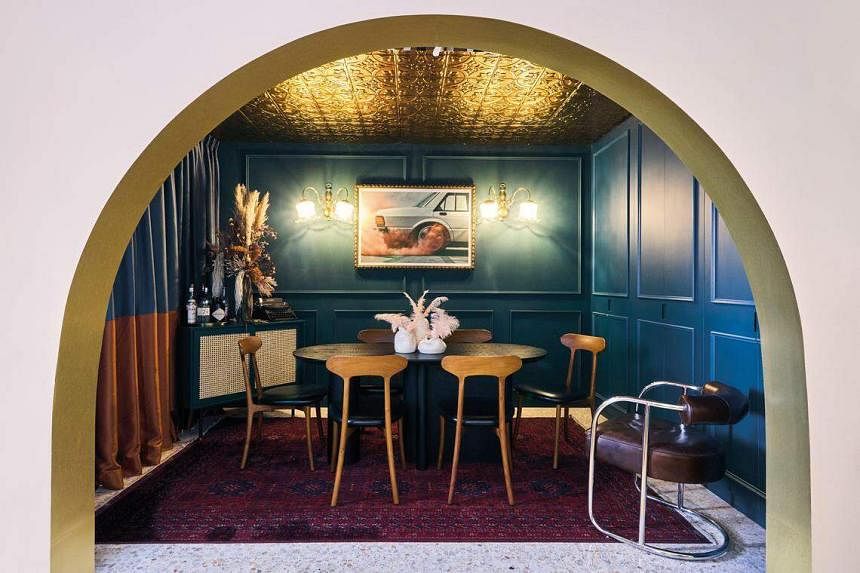
The other room in the home that gets a lot of attention is the dining space that has been carved out from what was previously another bedroom. A deep teal shade was used for the walls and hidden cabinetry, the rich colour providing a backdrop for an ornately framed print by Australian artist Kane Skennar, Pink Wheels, which the couple spotted at an exhibition and procured directly from the artist; a recently installed American tin ceiling imported from the United States; and salvaged vintage lamps that once decorated the hallways of the Raffles Hotel. The latter and several other pieces dotted throughout the flat came from second-hand furniture store Hock Siong, including the dining table and a pair of onyx stone lamps.
In the master bedroom, tucked behind a walk-in wardrobe and partitioned off with a fluted glass door, Mr Hong’s love for rich colours is evident. The bed is custom-made, with a scalloped headboard, all in a deep blue shade. Grey cabinets are flushed against the wall to maximise the space and his partiality to organic shapes take the form of a large mirror. An abstract art piece on the wall is by local artist Inkten, whom Mr Hong went to school with.
Outside the master bedroom, a former bedroom has been converted into a sunlit walk-in-wardrobe with a full-length mirror. Inside the sleek white cabinets are a mix of labels such as Dries Van Noten, Bode, EGONlab, Lemaire and Peter Do. Mr Hong also finds himself gravitating towards pre-loved pieces.
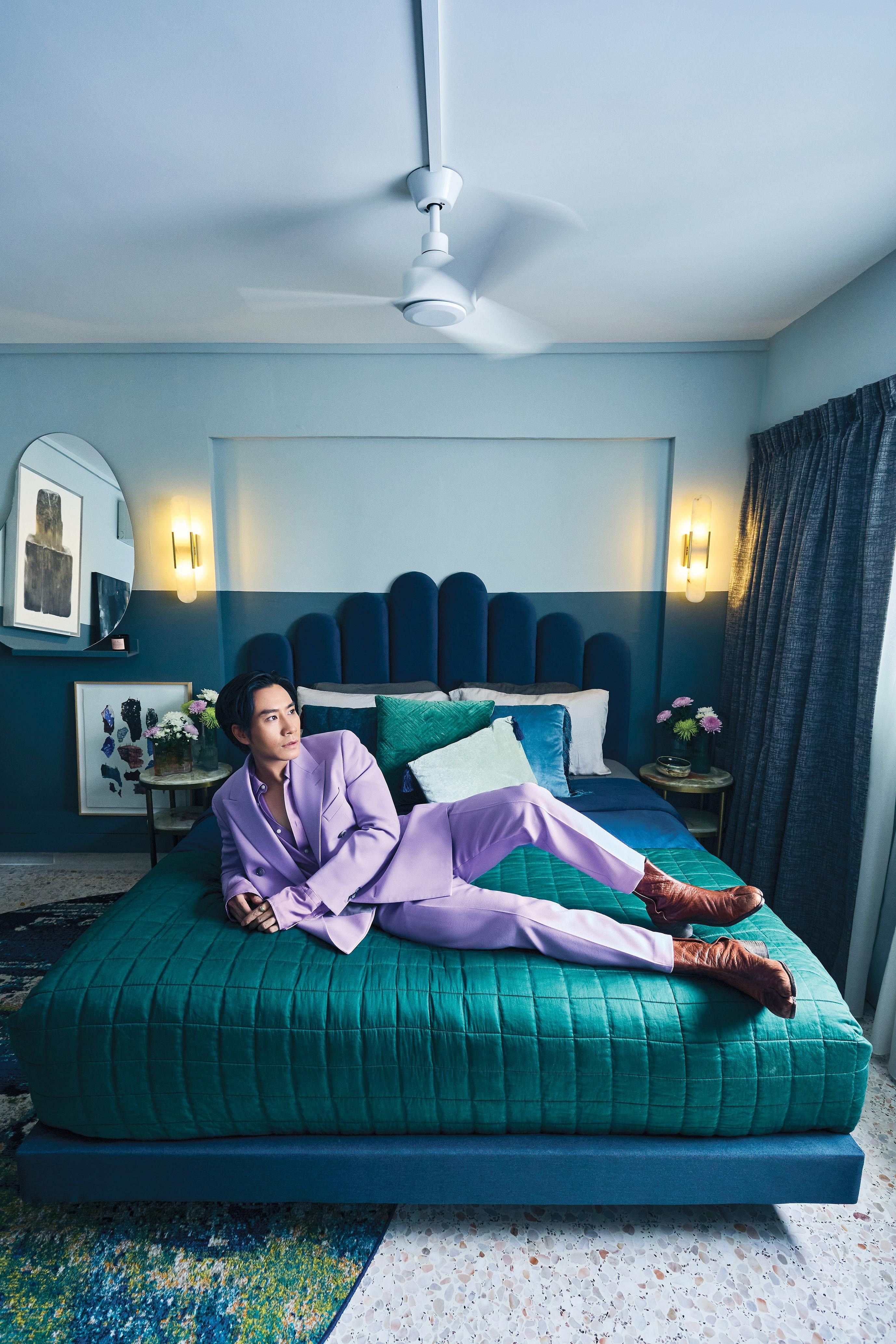
“After working in fashion for so long, I know how wasteful the entire industry can be. I like the thrill of finding vintage items when I’m travelling or even online.”
A careful shopper, he looks for forever pieces that will stand the test of time. His most treasured piece is a 1950s army field jacket that he found in Vancouver which has accompanied him all over the world.
“My wardrobe is filled with pieces that I know I will wear in the future. I gravitate towards clothes that have interesting silhouettes. I never limit myself to a colour or print. I like taking something ostentatious and loud and making it palatable and accessible,” he says.
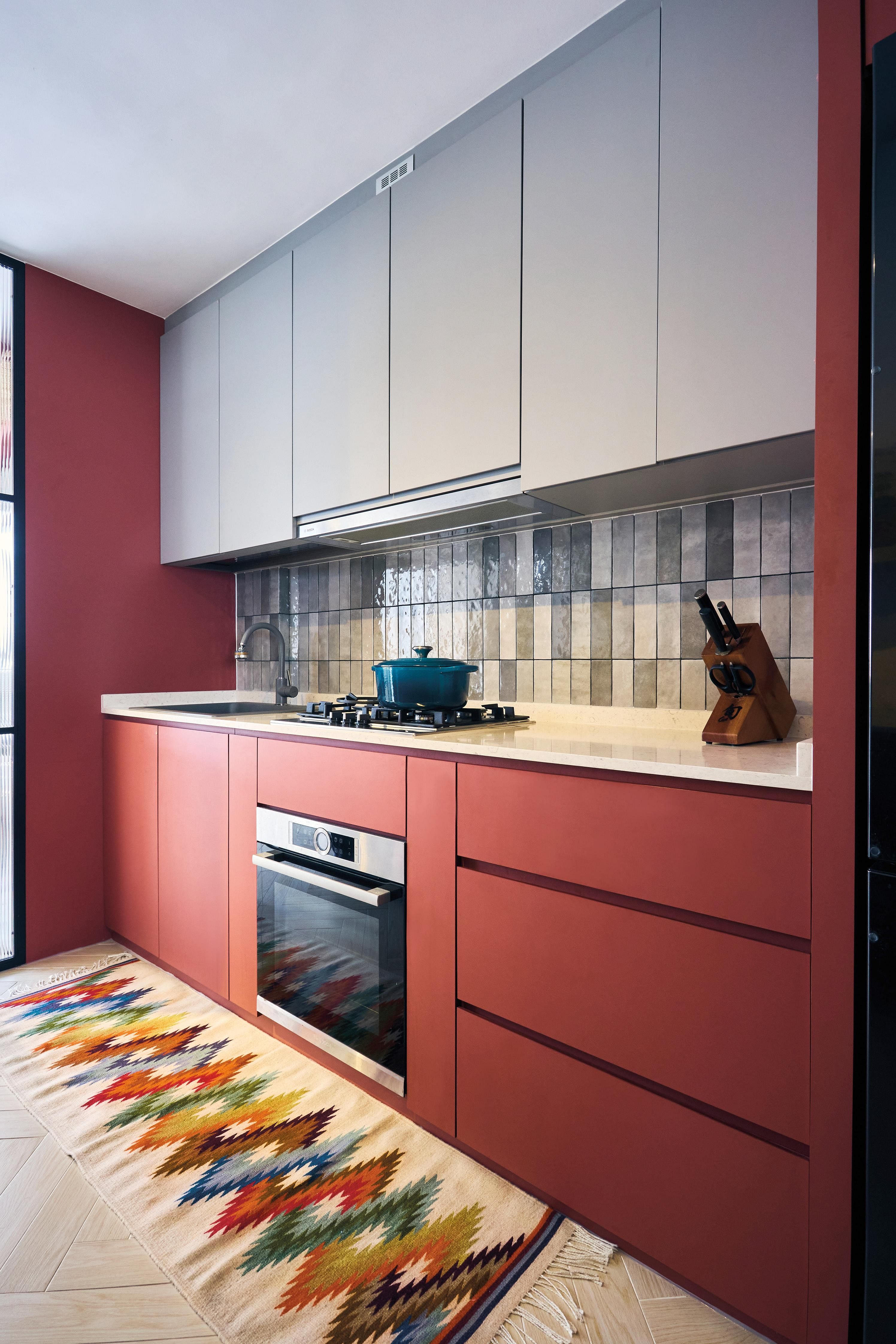
His eclectic personal style – a mix of bohemian chic, sharp tailoring, vintage finds with dandy flourishes like panama hats – translates into the seemingly carefree yet artfully curated layering of textures, patterns and colours in his apartment.
“Anything that I’ve put here is purposeful. And it reminds me of a period of time, or it inspires me for the next period of life and my ambitions in the future. It’s all personal memories that’ve been injected into this home.”
- This article first appeared in Harper’s Bazaar Singapore, the leading fashion glossy on the best of style, beauty, design, travel and the arts. Go to harpersbazaar.com.sg and follow @harpersbazaarsg on Instagram; harpersbazaarsingapore on Facebook. The February 2023 issue is out on newsstands now.
